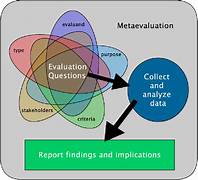An Evaluation of the Success of Computer-Assisted Education
Introduction
The rapid advancement of technology has significantly influenced education, leading to the widespread adoption of computer-assisted education (CAE). This method integrates digital tools, software, and the internet into traditional learning environments, offering personalized, interactive, and engaging educational experiences. But how successful has this approach been? This article evaluates the effectiveness of computer-assisted education, exploring its benefits, challenges, and overall impact on learning outcomes.
1. Understanding Computer-Assisted Education
Computer-assisted education refers to the use of computers and digital technologies to enhance teaching and learning processes. It includes:
- E-learning platforms (Moodle, Coursera, Khan Academy)
- Interactive software and simulations (educational games, virtual labs)
- AI-powered tutoring systems (adaptive learning technologies)
- Online assessments and grading tools
This approach has revolutionized how students learn and teachers instruct, making education more accessible and efficient.
2. Benefits of Computer-Assisted Education
a. Personalized Learning
CAE enables customized learning experiences by adapting content to individual students’ needs, pace, and abilities. AI-driven platforms analyze student performance and adjust lessons accordingly.
b. Increased Engagement and Motivation
Interactive elements like gamification, virtual simulations, and multimedia content make learning more engaging and enjoyable. This is particularly beneficial for students who struggle with traditional teaching methods.
c. Accessibility and Flexibility
Online education removes geographical barriers, allowing students from diverse backgrounds to access quality learning materials anytime and anywhere. This flexibility benefits working professionals, students in remote areas, and those with disabilities.
d. Efficient Assessment and Feedback
Automated grading systems provide instant feedback, helping students understand their mistakes and improve performance. AI-driven analytics also assist educators in identifying struggling students and adjusting teaching strategies accordingly.
e. Cost-Effectiveness
While the initial setup costs for CAE can be high, digital learning materials reduce long-term expenses associated with textbooks, printed assignments, and in-person training sessions.
3. Challenges of Computer-Assisted Education
a. Digital Divide and Accessibility Issues
Not all students have equal access to reliable internet and digital devices. Socioeconomic disparities can widen the education gap if CAE is not implemented inclusively.
b. Reduced Human Interaction
Despite its advantages, computer-assisted education may reduce face-to-face communication between students and teachers, affecting social skills and collaborative learning experiences.
c. Over-Reliance on Technology
Students may become too dependent on digital tools, leading to reduced critical thinking and problem-solving skills. Additionally, technical issues, such as software glitches or cybersecurity threats, can disrupt learning.
d. Teacher Training and Adaptation
Not all educators are equipped with the necessary digital skills to integrate CAE effectively. Training programs are essential to help teachers maximize the potential of computer-assisted learning.
4. Impact on Learning Outcomes
Studies have shown mixed results regarding the effectiveness of CAE. While many students benefit from personalized learning and engagement, others struggle due to limited access, lack of motivation, or poor implementation of technology in classrooms.
Positive Impacts:
- Higher retention rates due to interactive content
- Improved academic performance in subjects like mathematics and science
- Enhanced problem-solving and analytical skills
Negative Impacts:
- Decreased attention spans due to excessive screen time
- Lack of direct teacher support leading to frustration for struggling students
- Variability in effectiveness based on the quality of implementation
5. Future of Computer-Assisted Education
The success of CAE depends on continuous improvements in technology and pedagogy. Future advancements such as AI-driven adaptive learning, virtual reality (VR) classrooms, and blockchain-based credentialing could further revolutionize education.
To ensure long-term success, educational institutions must:
- Bridge the digital divide by providing affordable devices and internet access
- Train educators in digital literacy and pedagogy
- Balance technology with traditional teaching methods
Conclusion
Computer-assisted education has significantly transformed learning by making it more accessible, engaging, and efficient. While it presents challenges such as the digital divide and reduced human interaction, its benefits outweigh its drawbacks when implemented effectively. As technology continues to evolve, CAE will play an increasingly vital role in shaping the future of education, ensuring that learning remains dynamic, inclusive, and effective.


